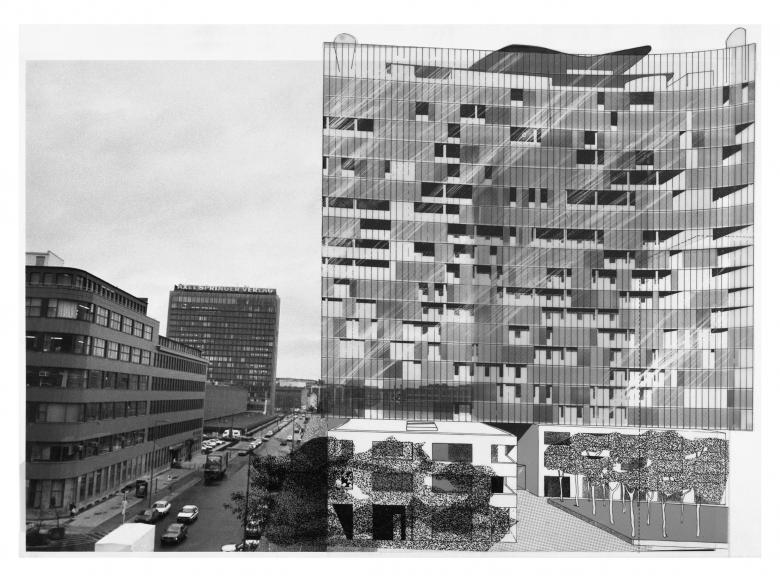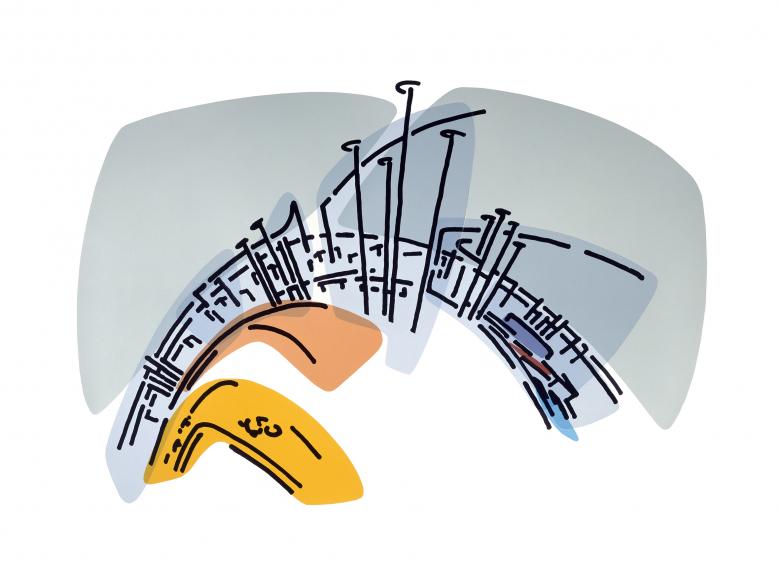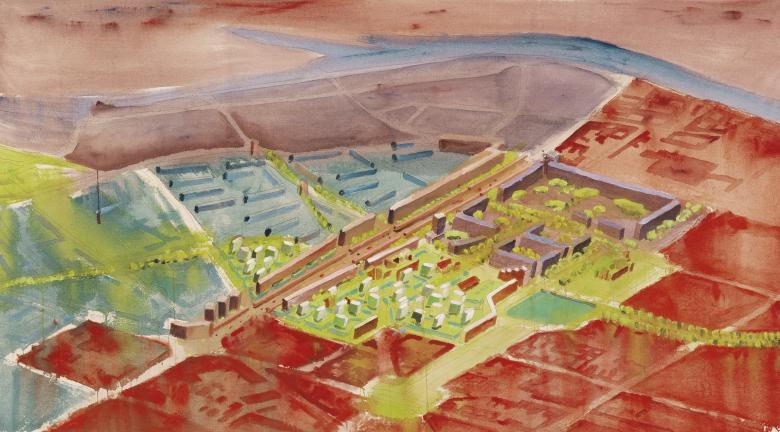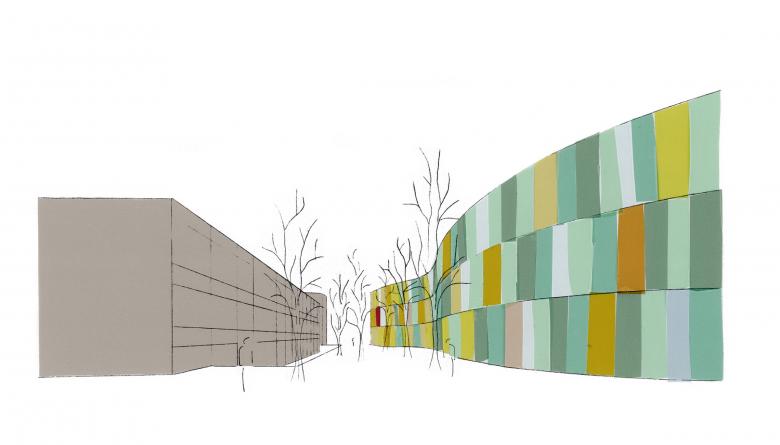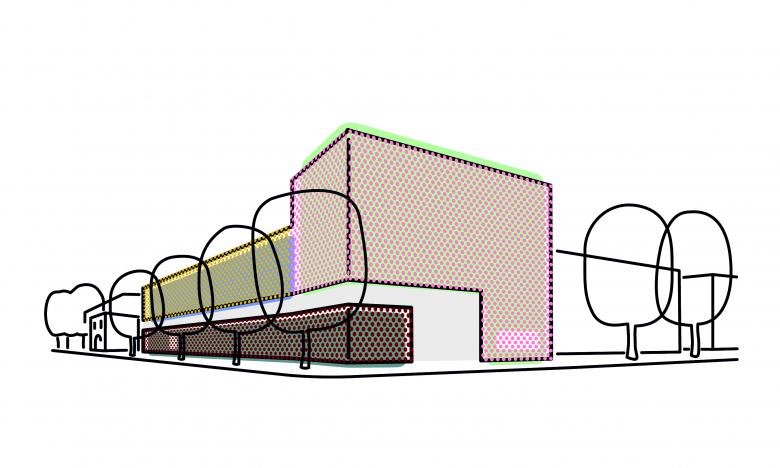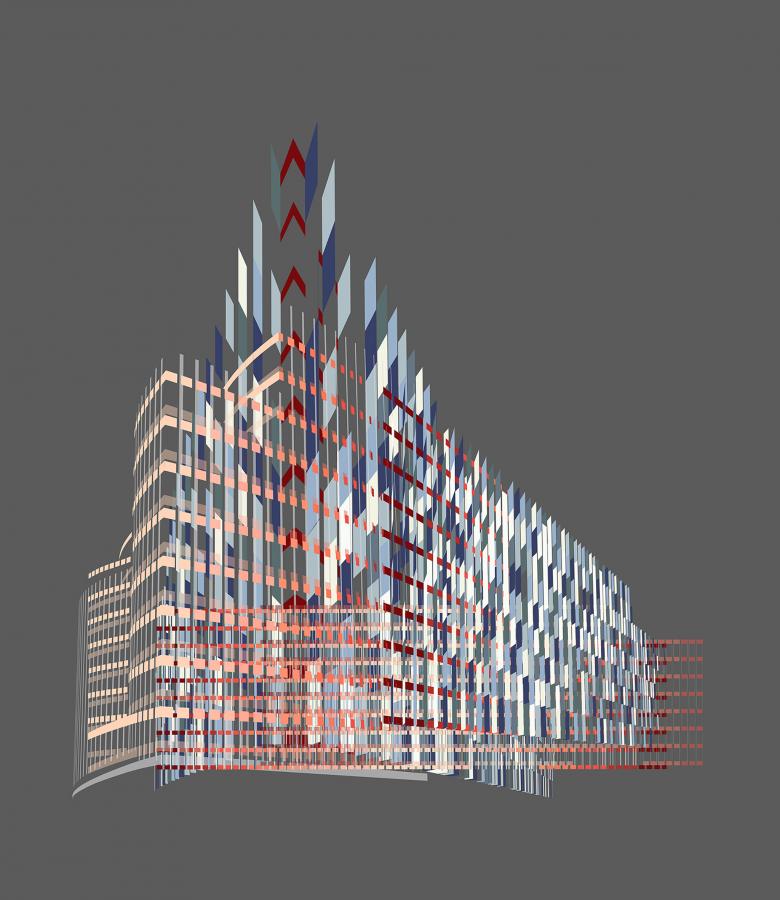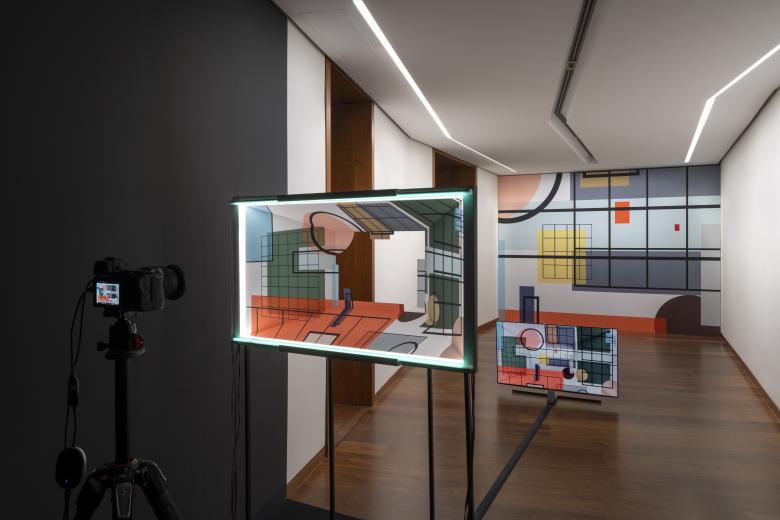'Sauerbruch Hutton - drawing in space' at Tchoban Foundation. Museum for Architectural Drawing
Worlds of Space and Color
The exhibition "drawing in space" by Sauerbruch Hutton provides an insight into the reflection and creative processes of their architecture. Falk Jaeger visited the exhibition and also found in it a journey through the development of architectural representation.
Never has there been so much drama in the cabinets of the Museum for Architectural Drawing in Berlin. Drawing and painting by hand as a means of communication for designs to be built is coming to an end. Paper on drawing tables is passé, files on screens are the contemporary media. At least they still exist, architectural drawings by the hand of the master, but only as a pastime, a genre of artistic practice.
The generation of architects now in their sixties is the one that lived through this shift and had to completely change their way of working. Sketches and perspective diagrams were drawn by hand with more or less talented strokes, and plans were inked on the drawing board. In drafting rooms you could hear the clattering of Rapidographs and the scratching of erasers. Later, colored or textured foils were glued on and Letraset labels and symbols were scratched on. Until finally the computer arrived, initially as an aid, then as a fully fledged parametric design tool that presented renderings more beautifully than reality.
They have not yet taken this last step into parametric design (which some confuse with AI), and there are no renderings to be seen in the exhibition by Louisa Hutton and Matthias Sauerbruch at the Tchoban Foundation, but the development of architectural representation is otherwise present: from the studio designs of the two at the Architectural Association London, dutifully put on fine paper in ink or watercolor, to hand sketches on the tablet and artistic collages for the Experimenta science center in Heilbronn, in which several employees were involved as CAD specialists. Of course, the computer still remained a tool here — like a paintbrush and pen.
When Sauerbruch and Hutton are invited for such an exhibition, it is certainly because they have created their own, unmistakable style. They have animated many of their projects using these iconic sketches, which are somewhat reminiscent of the charcoal drawings Erich Mendelsohn made in the trenches: tiny images (he had very little paper available) with a few thick, dynamic strokes suggesting dynamic projects.
The movement depicted in Mendelsohn's drawings is amplified by a distortion similar to looking through a wide-angle or fisheye lens. This distortion is also used by Sauerbruch Hutton when they enlarged small formats many times over. They call them "haiku drawings" in reference to the short Japanese poems that hint at many things while examining how little detail is needed to make the desired statement. The color surfaces, which look like glued-on foils and never quite match the outlines precisely, are also important.
In addition to the different aesthetic experiences, one also experiences a tour d'horizon through 35 years of the pair's oeuvre, from the GSW Headquarters (1990–99) — still the most beautiful high-rise in the city — Fire and Police Station and Photonics Centre, all in Berlin, to the KfW Westarkade in Frankfurt, the Brandhorst Collection in Munich and, most recently, the magnificent M9 Museum in Venice-Mestre, which also makes it clear how such a project can be integrated into a given situation in terms of monument preservation, design and urban structure.
Of course, it is also about colors, because the facades of the projects from the office usually show an intense play of colors, with their glass, ceramic or aluminum panels, sometimes changing depending on the movements of passersby. Again one thinks of Mendelsohn, who designed facades in the 1920s with the idea that they should be experienced in motion — aligned with the new rapid sense of time, as when passing by in an automobile. Depicting these different views and color gradients on “four-dimensional drawings” (with a time factor) on a single sheet is an obsession of architects, one that leads far away from the technical, functional drawing and into the artistic space.
Finally, experimental drawings are also on display, in which the aim is to change the perception of spaces through color and how color can succeed in deceiving and confusing the viewer. A video installation in the upper room of the museum has visitors confront their own presence and movement within such a color space. On March 22, the installation will change as part of an event with ANCB The Aedes Metropolitan Laboratory, when the exhibition catalog, in which the installation will be documented, will be made available.
February 3 – May 5, 2024
Tchoban Foundation, Christinenstraße 18a, 10119 Berlin
More about the exhibition
This article was first published as “Raumwelten und Farbwelten” on German-Architects. English translation edited by John Hill.
